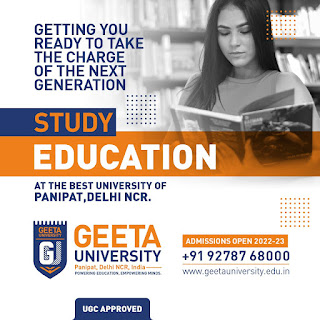What Is the Need to Inspire Students to Innovate? - Geeta University
A number of changes have occurred in adult education. Adult learning has become one of the important components of lifelong learning. Best B tech University in Haryana emphasises on five key messages in the communication:
- To remove barriers to participation
- To increase the quality and efficiency of the adult education
- To speed up the process of assessment of skills and competences and their validation and recognition
- To ensure sufficient investment
- To efficiently monitor the adult education sector
Within the project, they have developed, tested and shared a set of innovative strategies to increase adults’ intrinsic motivation for learning, ensure profound learning and transfer of new acquisitions by means of developing meta-cognitive skills. To improve the accessibility of learning opportunities for adults, our goal is to develop and disseminate strategies to stimulate demand for learning among adults reluctant to engage in lifelong learning.
Best B.Tech University develop and are promoting innovative strategies for in-service training of adult educators with a view to enhancing adult learners’ motivation and active engagement in lifelong learning. To provide adult educators with a set of creative and critical thinking strategies to use in adult learning contexts, they promote creativity by creating innovative learning strategies.
There is a need to recognize and value non-formal learning in a creative and innovative way, raising the visibility of skills acquired outside the formal system and fostering complementarily between non-formal and formal learning, while at the same time promoting equal opportunities. The main message is about the need to improve and widen the recognition of non-formal learning, and not just in relation to employability. A better equipped workforce is required; one that can interact effectively with young people, especially those who are disadvantaged and lack access to the jobs market.
The workers need an improved curriculum, and an investment in training, to stimulate the innovative and creative capacities within young people. They need access to commonly accepted recognition tools and to improved practices that can be used in their own social and cultural contexts. Through the implementation of curriculum that integrates design thinking and academic content, educators can help students develop a skill set that includes ideas generally not fostered within traditional school settings.
This process would contribute to different levels of creative knowledge, creative skills and creative mindsets that can be achieved by design thinking education, culminating in a capability that is called “creative confidence”. By applying the techniques of design to education, teachers loosen the narrow, rigid process of traditional learning and tap into students’ deep wells of creativity, encouraging them to see nuanced problems from inside the very core of an issue, and make critical thinking essential to solving any problem.




Comments
Post a Comment